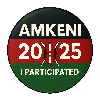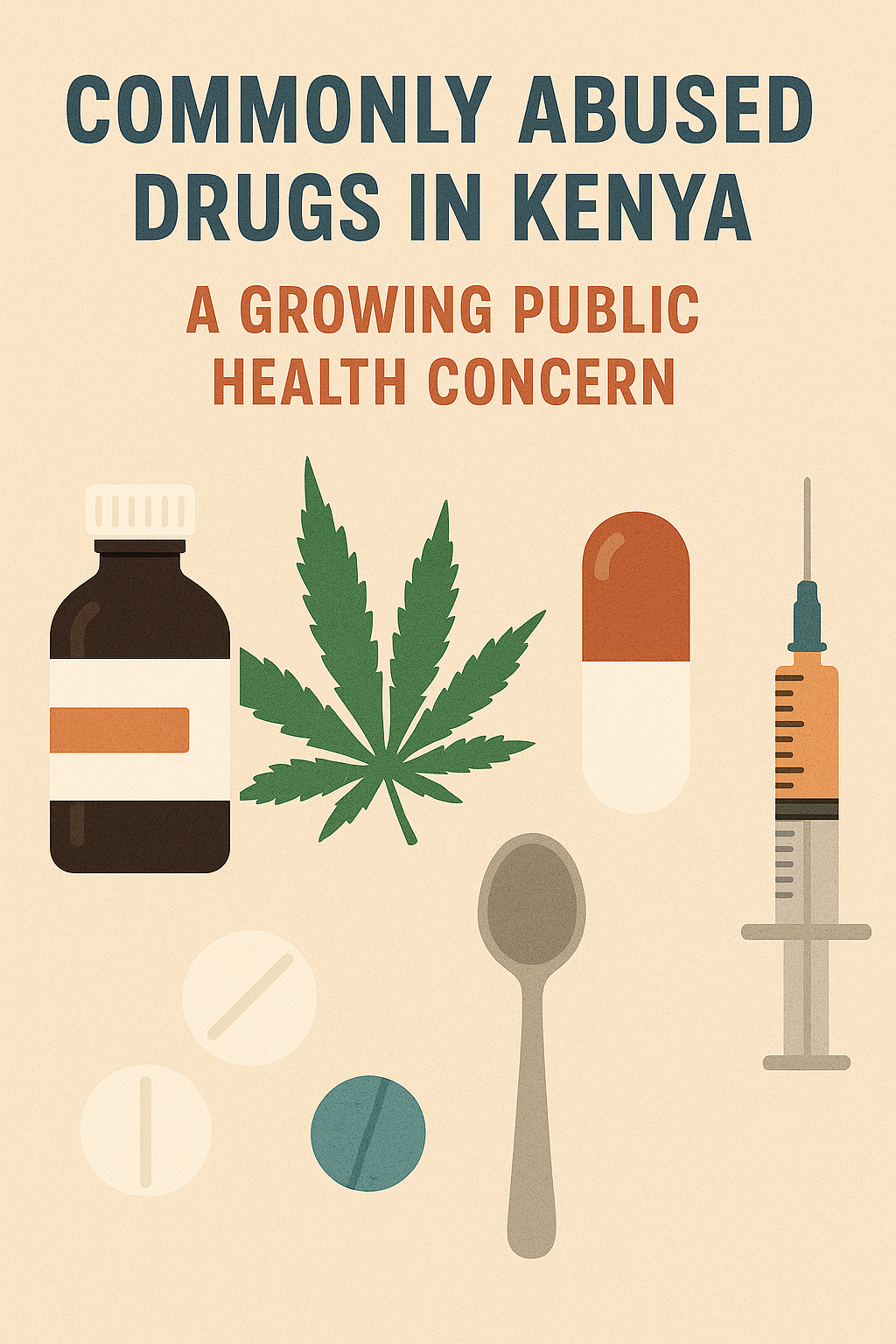Substance abuse remains a pressing public health issue in Kenya, with serious social, economic, and health consequences. While drug use is not unique to Kenya, the country faces a unique set of challenges driven by factors such as poverty, unemployment, peer pressure, urbanization, and easy access to certain substances. This blog explores some of the most commonly abused drugs in Kenya, the factors contributing to their use, and the impact on individuals and communities.
1. Alcohol
Overview:
Alcohol is the most widely abused substance in Kenya. Despite being legal and socially accepted, excessive consumption has far-reaching consequences.
Commonly Abused Forms:
- Chang’aa (a potent homemade brew).
- Busaa (a traditional fermented drink).
- Legal spirits and beers.
Effects.
- Liver disease, accidents, domestic violence, and risky sexual behavior.
- In extreme cases, methanol-contaminated brews have led to blindness or death.
2. Bhang (Cannabis)
Overview:
Locally known as bhang, cannabis is one of the most commonly used illegal drugs in Kenya. It is widely available and often smoked or mixed with food and drinks.
Reasons for Use:
- Peer influence, escapism, and myths about enhanced creativity or relaxation.
Risks:
- Impaired judgment, addiction, cognitive decline, and mental health disorders such as psychosis.
3. Khat (Miraa)
Overview:
Miraa (or khat) is a stimulant derived from the leaves of the Catha edulis plant. It is legal in Kenya and culturally accepted in many communities, particularly in Eastern regions.
Effects:
- Mild euphoria, alertness, and hyperactivity.
- Long-term use can lead to insomnia, dental issues, and digestive problems.
4. Heroin
Overview:
Heroin abuse has surged, especially in coastal areas such as Mombasa and Malindi, largely due to the region’s role in international drug trafficking routes.
Modes of Use:
- Injecting, snorting, or smoking.
Dangers.
- High risk of addiction, overdose, HIV/AIDS through shared needles, and death.
- Significant burden on public health systems and rehabilitation centers.
5. Prescription Drug Abuse.
Commonly Abused Medications:
- Codeine (cough syrups).
- Diazepam and other sedatives.
- Tramadol and other painkillers.
Issues.
- Readily available over the counter in some pharmacies without proper regulation.
- Often misused by youth seeking a cheap high.
6. Inhalants.
Overview:
Mostly abused by street children and marginalized youth due to low cost and accessibility.
Common Types:
- Glue, petrol, nail polish remover, and aerosol sprays.
Effects:
- Immediate euphoria followed by dizziness, hallucinations, and brain damage with prolonged use.
The Way Forward.
Prevention and Awareness:
- Education: Schools, parents, and communities need to talk openly about the dangers of drug abuse.
- Policy Enforcement: Stricter regulation on the sale of alcohol and pharmaceuticals.
- Rehabilitation: Accessible treatment and rehabilitation centers with tailored support programs.
- Community Empowerment: Providing youth with skills, jobs, and opportunities to reduce vulnerability to drug use.
Conclusion.
Substance abuse in Kenya is a multifaceted challenge that requires collective action from individuals, families, communities, and government institutions. Tackling drug abuse is not just about law enforcement, it’s about education, support, and creating hope for those struggling with addiction.
If you or someone you know is battling drug addiction, don’t suffer in silence. Help is available.

